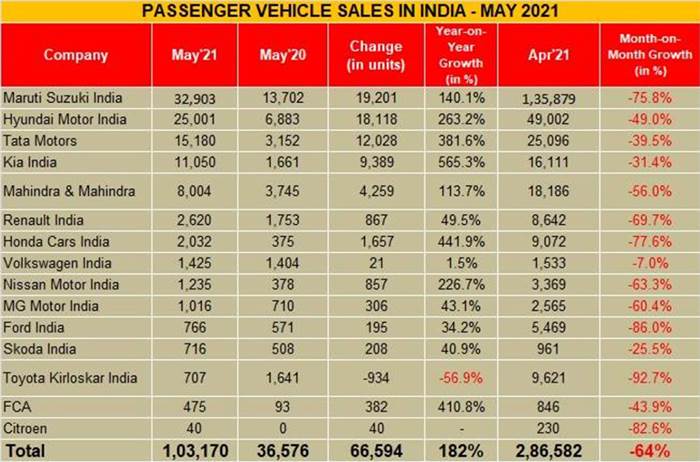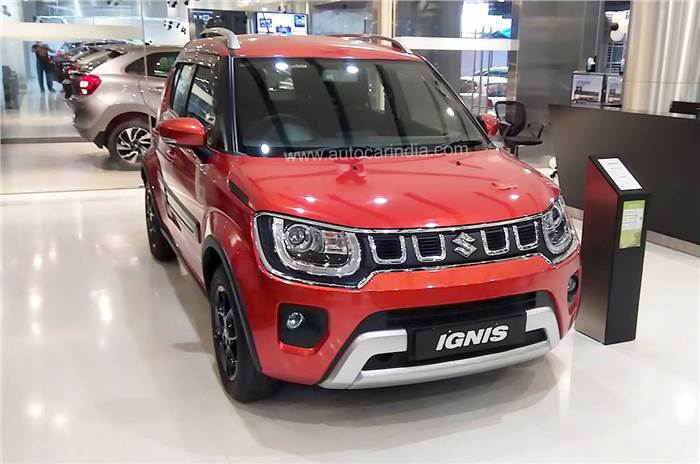Maruti Suzuki, Hyundai, Tata Motors, Kia and Mahindra — which accounted for 85 percent share of the passenger vehicle (PV) market in FY 21 — collectively sold 92,138 units in May 2021. Across the board, sales were down 64 percent month-on-month. However, it is still better than the sales figures from May 2020, as year-on-year growth is 182 percent.
- Lockdowns in various states hindered car sales in May
- With demand for new cars low, automakers faced concerns of a stock pileup
- Uptick in the auto sector’s performance expected around September-October
Impact of lockdowns on sales
From Maharashtra to Haryana and Karnataka to Tamil Nadu, key automotive hubs in India remained closed due to some variation of a lockdown in place for a large part of May with Covid on the rampage in its second and deadlier avatar.
Carmakers were forced to halt production and curtail the spread of infection within factories. They had to take this step to prevent further building up of inventory in the system with showrooms downing their shutters too.
Carmakers stock levels
While stock pileup was a concern, digital retail also took a backseat during this time. Toyota Kirloskar Motor's Senior VP, Naveen Soni, had told our sister publication Autocar Professional that new orders dropped by 50 percent even in regions such as the North East, where the impact of the second wave was not that significant.
Dealers said that while cancellations were limited to about 10-15 percent, deliveries and pre-bookings were being put "on hold" with customers now giving a second thought to spending on a car.
However, the state-wise lockdowns were an opportunity for M&M, Hyundai and Kia to continue production and normalise wait periods for the Thar, Creta and Sonet. This was also being exacerbated by the global semiconductor shortage which could reach some normalcy by September.
Indian automotive industry future outlook
With half of April and almost the whole of May blacked out, the industry is staring down the barrel for Q1 FY2022 with supply chain disruptions expected to continue over the next couple of months.
“I feel it will take some time for the recovery to happen. This year, the first ray of hope is the festive season and we don’t expect a lot before that,” said Vinkesh Gulati, president of the Federation of Automobile Dealers Associations (FADA).
While June and July sales could see “wholesales slowly improving”, the real uptick could happen only around September-October. This is when the impact of the monsoon will actually be felt along with the buoyancy of the festive season.
For now, the industry will be hoping that there will be no third wave of the pandemic to contend with — this round has already knocked the wind out of their sails.

Also see:
FADA: automobile sales decline by over 28 percent in April 2021
Two-wheeler sales in April 2021 affected by second wave of COVID-19




Comments
Member Login
Personal Details
No comments yet. Be the first to comment.